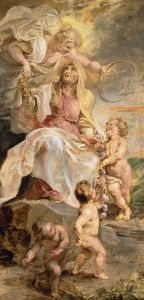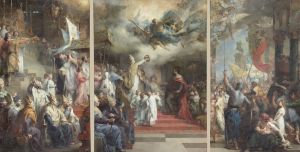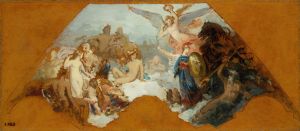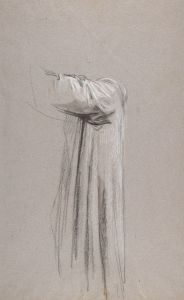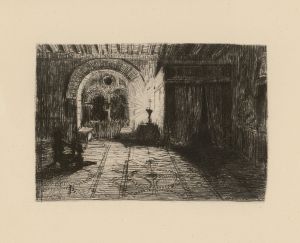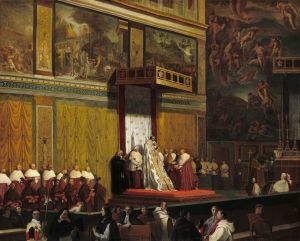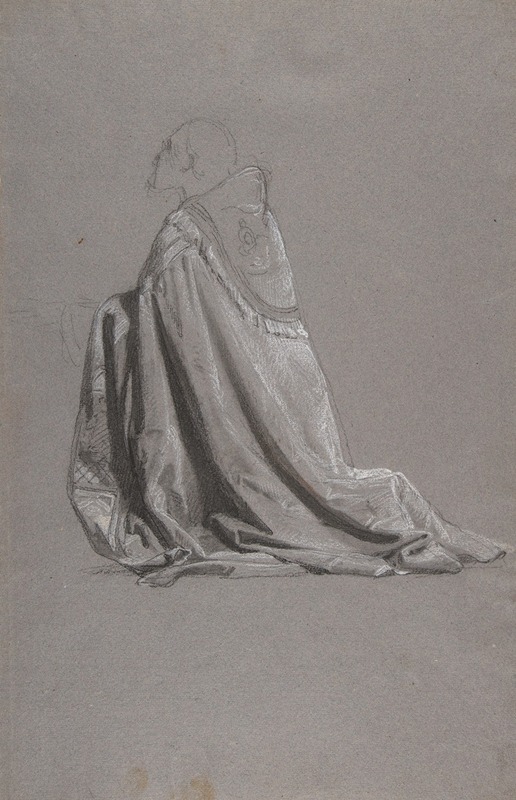
Bishop
A hand-painted replica of Isidore Pils’s masterpiece Bishop, meticulously crafted by professional artists to capture the true essence of the original. Each piece is created with museum-quality canvas and rare mineral pigments, carefully painted by experienced artists with delicate brushstrokes and rich, layered colors to perfectly recreate the texture of the original artwork. Unlike machine-printed reproductions, this hand-painted version brings the painting to life, infused with the artist’s emotions and skill in every stroke. Whether for personal collection or home decoration, it instantly elevates the artistic atmosphere of any space.
Isidore Pils was a notable French painter of the 19th century, recognized for his historical and religious compositions. One of his works, "Bishop," exemplifies his skill in capturing the solemnity and dignity associated with ecclesiastical figures. Although specific details about this particular painting are scarce, Pils' broader body of work provides context for understanding its significance.
Isidore Pils was born on July 19, 1813, in Paris, France. He studied under François-Édouard Picot at the École des Beaux-Arts in Paris, where he honed his skills in classical painting techniques. Pils first gained significant recognition when he won the prestigious Prix de Rome in 1838 for his painting "Saint Peter Healing a Lame Man at the Door of the Temple." This award allowed him to study at the Villa Medici in Rome, where he was exposed to the works of the Renaissance masters, which greatly influenced his style.
Pils' oeuvre is characterized by its attention to detail, dramatic use of light and shadow, and a focus on narrative clarity. His works often depict religious, historical, and military themes, reflecting the academic art traditions of his time. Among his most famous works are "The Death of a Sister of Charity" and "Rouget de Lisle Singing La Marseillaise," both of which demonstrate his ability to convey emotion and drama.
"Bishop" likely fits within Pils' interest in religious subjects, a common theme in his work. While specific information about the painting "Bishop" is limited, it can be inferred that Pils applied his typical meticulous approach to the portrayal of the bishop, emphasizing the spiritual and authoritative presence of the figure. His religious paintings often highlight the solemnity and ritualistic aspects of ecclesiastical life, capturing the viewer's attention through careful composition and expressive detail.
Throughout his career, Pils received numerous commissions for public works, including murals and large-scale paintings for churches and government buildings. His contributions to the decoration of the Church of Saint Vincent de Paul in Paris and the Panthéon are notable examples of his work in religious art. These projects further solidified his reputation as a leading painter of his time.
Pils' influence extended beyond his lifetime, as he was appointed a professor at the École des Beaux-Arts in 1863, where he taught a new generation of artists. His dedication to the academic style and his ability to convey powerful narratives through his paintings left a lasting impact on the art world.
Isidore Pils passed away on September 3, 1875, in Douarnenez, France. Despite the limited information on the painting "Bishop," Pils' legacy as a master of historical and religious painting endures. His works continue to be appreciated for their technical skill and the emotional depth they convey, securing his place in the canon of 19th-century French art.






